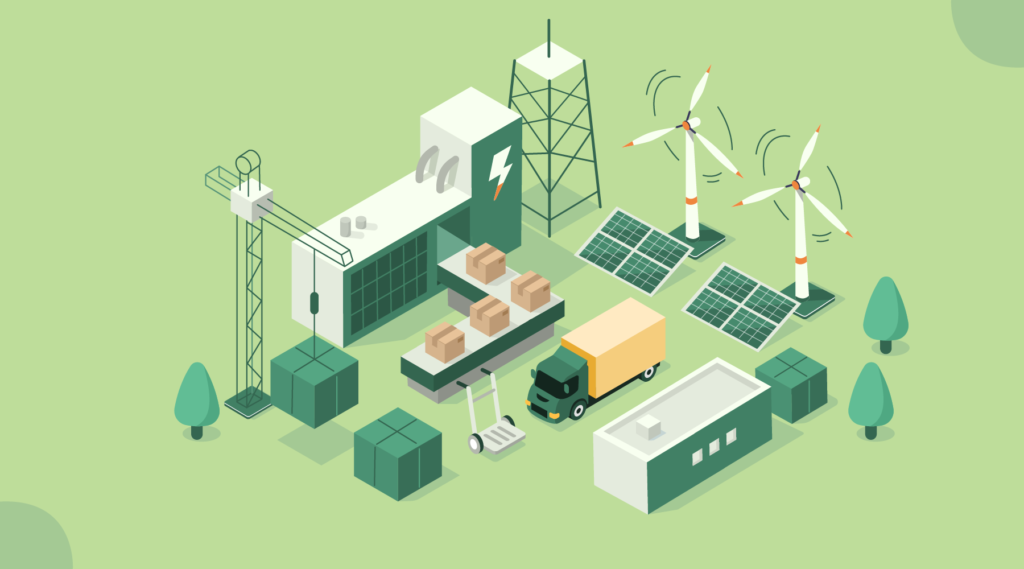
In the recent years, the effects of global warming have become increasingly apparent. As a result, there is a heightened awareness of the importance of environmental protection. Consumers are now wary of what they are buying and the brands which they buy from.
Although there is a raised awareness, there needs to be widespread development of methods to better understand and address these impacts. One of the techniques already in practice is Life Cycle Assessment (LCA).
LCA can assist in:
-
Identifying opportunities to improve the environmental performance of products at various points in their life cycle.
-
Informing decision-makers in industry, government, or non-government organizations (e.g., for the purpose of strategic planning, priority setting, product or process design or redesign).
-
The selection of relevant indicators of environmental performance, including measurement techniques.
-
Marketing (e.g., implementing an ecolabelling scheme, making an environmental claim, or producing an environmental product declaration).
LCA addresses the environmental aspects and potential environmental impacts (e.g., use of resources and the environmental consequences of releases), throughout a product’s life cycle. This covers the production line starting at raw material acquisition, through to production, use, end-of-life treatment, recycling, and final disposal (i.e., cradle-to-grave).
The depth and the breadth of LCA can differ considerably depending on the goal of the analysis. In other words, the customer defines the scope.
There are four phases in an LCA study:
-
The goal and scope definition phase.
-
The inventory analysis phase.
-
The impact assessment phase.
-
The interpretation phase.
Our software at Benchmark is designed to provide LCI and LCIA data accurately and consistently. The life cycle inventory analysis phase (LCI phase) is the second phase of LCA. It is an inventory of input/output data regarding the system being studied and involves the collection of the data necessary to meet the goals of the defined study. The life cycle impact assessment phase (LCIA) is the third phase of the LCA.

- Defining the study goal and scope
- Compiling an inventory of relevant inputs and outputs of a product system, based on mass and energy flows
- Evaluating the potential environmental impacts associated with those inputs and outputs
- Interpreting the results of the inventory analysis and impact assessment phases in relation to the objectives of the study
In recent years, a large volume of communications on LCA studies have accumulated, and almost all of them claim fairness. But ultimately, this reflects the definition of the goal and scope and may not accurately report the whole.
At Benchmark, we strictly adhere to the reference standards SR EN ISO 14040 series and procedures and records required by them.
LCA requires that analysis is completed by independent experts who are preferably external, i.e. Benchmark, to ensure objectivity. Objectivity ensures correct conclusions that will lead to finding that waiver decisions on economic and environmental grounds.
Benchmark’s software solution is a ‘Cradle-to-gate’ an assessment of a partial product life cycle from resource extraction (cradle) to the factory gate (i.e., before it is transported to the consumer).

Cradle-to-gate assessments are sometimes the basis for environmental product declarations (EPD), termed business-to-business EPDs. One significant use of the cradle-to-gate approach compiles the life cycle inventory (LCI).
Benchmark collects the impacts in the packaging production process. We can also add the steps involved in transport to plant and manufacturing process, which enables a Packer / Filler to produce their own cradle-to-gate values for their products. Combining these figures will result in a cradle to retailer value.
Traditional Life Cycle Analysis is complex, costly, and time-consuming. However, at Benchmark, our software can conduct an LCA quickly and cost-efficiently, which allows for better, accurate carbon transparency reporting.
Recent Posts
- European Parliament Votes to Postpone Corporate Due Diligence and Sustainability Reporting Requirements
- Financial Markets vs. Sustainability Markets in Packaging
- How prepared are you for the Packaging and Packaging Waste Regulation (PPWR)?
- Green Claims Regulation: A Global Perspective on Environmental Marketing
- The Environmental and commercial Impact of Packaging (Facts, Figures and a solution)


Recent Comments